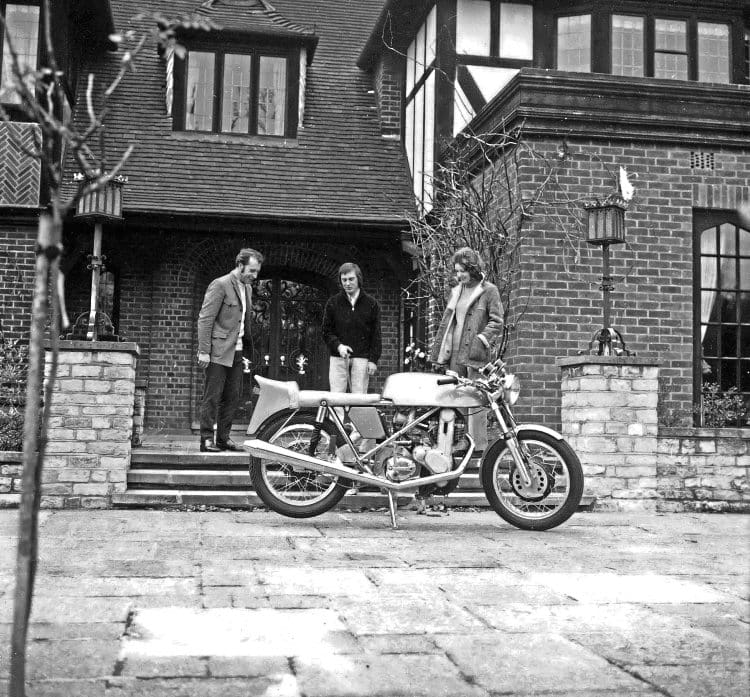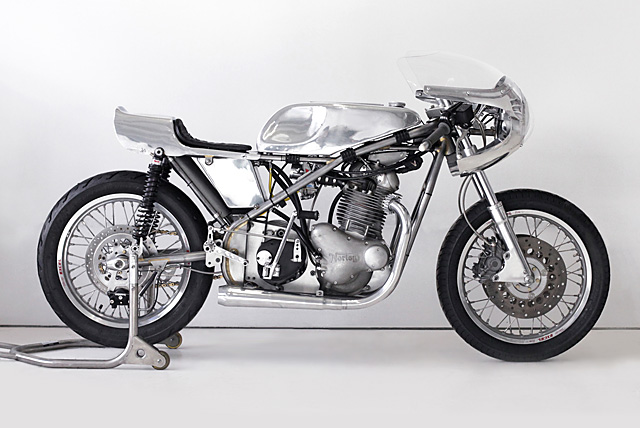I built a Tribsa using an A10 BSA frame and a 650 Triumph engine. There eas a tank mount which hangs down from a top rube on the frame. It stabilises the tank. I think I removed it. My Tribsa had 1963 Triumph fork yokes and it's handling was better than my 500cc Triton which replaced it. One of my mates also built a similar Tribsa, but used the BSA A10 fork yokes - it scared him shitless. It did it's antics at about 70 MPH.
Not because I own one, if you are serious about road racing, a Mk3 Seeley frame is the best way to go. It is the lightest while still being strong. A unit Triumph frame might not have enough room, and a BSA A10 frame is heavier. I followed my Seeley frame for about 2 years before I tacked it down and bought it. But I could not get the Laverda 750 motor it was housing when I raced agaisnt it. It had taught me a lesson about handling when the idiot who was riding it crashed me. What he did was impossible with any Triton or Manx. He rode around me in a high speed corner then braked in front of me. My drum brake tossed me.
The Seeley frames were way ahead of anything else in the 1960s. People who believe in featherbed frames are kidding themselves. I have ridden an original Manx and my Seeley - I know which handles better. A really good guy on a Manx might be somewhere near me in a race, but never in front.
If you could place a value on a motorcycle there may not be another bike on the planet worth as

pipeburn.com

 www.classicbikeguide.com
www.classicbikeguide.com

 www.classicbikeguide.com
www.classicbikeguide.com

